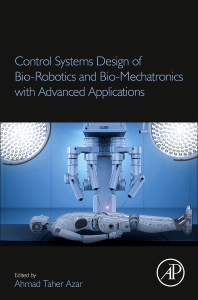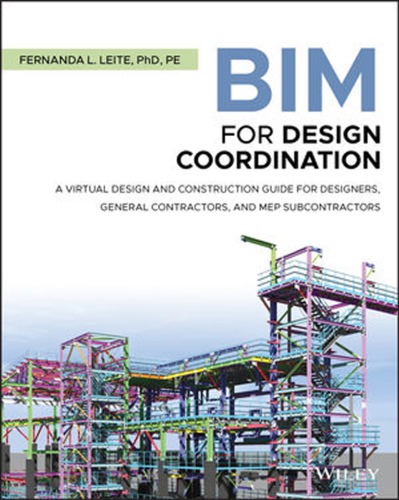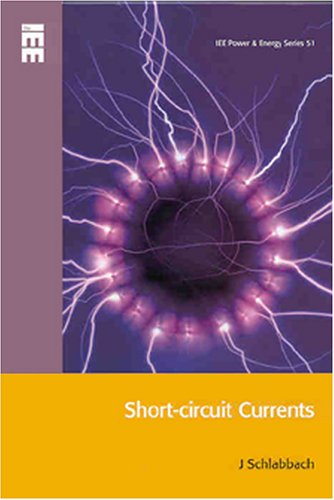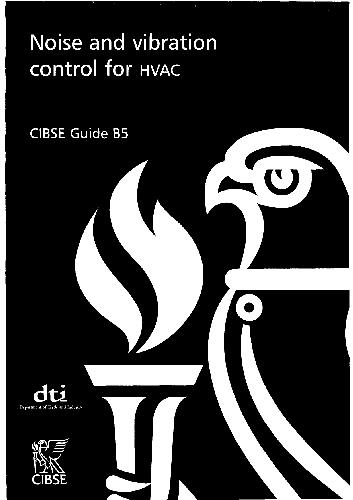| Book Name: | [PDF] Control Systems Design of Bio-Robotics and Bio-Mechatronics |
| Free Download: | Available |
Control Systems Design of Bio-Robotics and Bio-Mechatronics

Control Systems Design of Bio-Robotics and Bio-Mechatronics with Advanced Applications Edited by Ahmad Taher Azar | PDF Free Download.
| Book Details : | |
|---|---|
| Language | English |
| Pages | 489 |
| Format | |
| Size | 33.00 MB |
Foreword to Control Systems Design of Bio-Robotics and Bio-Mechatronics
The robot word was defined at the beginning of 1920 by the Czech writer Karel Capek as an artificial man. In this sense, the robot imitates a human, with feeling, reacting to stimuli of the surroundings, moving and performing mechanical work, and pretending thinking software.
A robot is an artificial man or part of it, a humanoid robot, artificial organs, or artificial intelligence.
This means that the use of the name biorobots is only a reminder of the biosource of inspiration and the purpose option of its application.
A good example of bioinspired or applied technology is using the neural network in computing methods (e.g., in decision-making systems) and—on another hand—using the wheel (not existing in natural organism motion systems) for robotics application.
We can create a robot drone inspired by the physiology of insects or birds or create medical transport devices based on wheels.
We can use material technologies based on natural or artificial (e.g., shape memory alloys) components.
By expanding the scope of inspiration (from human center), the robotics also gain knowledge about anatomical (mechanics), physiological, and brain (control) solutions from animal observation, or from the analysis of plant structure and understanding natural phenomena.
For Leonardo da Vinci (a genius who wrote a lot, but did not publish any books, he painted a lot, but only completed a few paintings, designed military machines, but used them only in the theatre), creating robot solutions was a consequence of the cognitive passion, it was an attempt to answer the following questions: how a person moves, how a bird flies (studying and analyzing anatomy, physiology, behavior).
At present, as a human being, we have moved our activity from the ground to a computer. From the natural world to the virtual one. Our activity is digital, so imitating human objects—bots—is another edition of robots.
Bot specialist uses knowledge about the behavior of people to model and simulate digital characters.
These characters are not only the heroes of the new field of art (computer games, which are an interactive version of the story) but, soon, above all, intelligent, pretending people, service provider interfaces.
For example (chatbots, cowboys, avatars, agents, etc.), it is informant, hotel reception staff, our bank assistants, or a general practitioner.
After the great progress in medicine of telecommunications (distance transmission of information), it is now time for the development of selection (distance transmission of action, work). That means you need to use robots.
A medical robot can be exactly where and when it is necessary, helpful, saving human lives or health.
Medical robots work as diagnostic robots (digital image diagnostics), surgical robots (reducing the invasiveness of surgery), welfare and social robots (increasing the quality of life of elderly), rehabilitation robots (controlled movement), rescue robots (in various environments), artificial organs, biorobots (used for cognitive purposes—neurophysiology, brain study, or social self-organization), educational medical robots (interactive patient simulators).
The art of robotics is based on an intelligent combination of mechanical work and information management obtained by sensors.
But among the solutions that can be used in medical applications, we have also fully mechanical devices—such as the designed by J.E.N Jaspers (Delft University) surgical telemanipulator ( Jaspers et al., 2007), digital devices (dr Bot), as well as attempt to create a biological-technical hybrid.
Kevin Warwick, known as a first human cyborg (after implanting an electronic interface), claims (Warwick, 2013) that “where a brain is involved it must … be seen … as part of an overall system—adapting to the system’s needs.”
Warwick is a pioneer in studying the connection between the biological body and the robot. At Reading University, prof. Warwick’s team has done research with the use of naturally cultivated neurons as brains controlling small mechanical systems.
“In terms of … learning and memory investigations are at an early stage. However, the robot can be seen to improve its performance over time in terms of its wall avoidance ability…” Warwick is considering robots with biological brains.
This “approach allows for ‘complete body engineering’ in which brain size, body size, power, communications, and other abilities are optimized for the requirements in hand.”
He concludes, “Maybe this technique will ultimately open up a future route for human development whereby humans can cast off the shackles and limitations imposed by the restrictions of having to live in a biological body.”
The integration of engineering and biology is a fact. This raises the question as to the borderline between a biological organism and a technical device.
Where is the beginning of consciousness and intelligence? In my opinion, my answer is: the beginning of consciousness is when the question “why” appears between the analysis of information from the environment and start the actions (Nawrat, 2011).
Of course, for standard-based medical activities, the “why” question (between fact-based assessment, e.g., diagnosis and action treatment) posed by a robot can be considered a system weakness. But that’s what people are.
I believe ethics to be the art of making the right choices. For ages, philosophers have been analyzing issues connected with the man-versus-man and man-versus-the world relations in order to help us comprehend the reality and find the correct conduct.
Ethics and morality mutely assume a human-to-human contact. Now we have to solve a number of ethical problems related to the fact that robots are among us, robots are moving, robots cowork with us (from robocars to robot doctors).
The three laws of robotics proposed by I. Asimov are not enough. Perhaps a modification of the Declaration of Human Rights following the dissemination of robots will be necessary.
With the harmonious development of technical and biological sciences and their reasonable implementation, we can influence the evolution of species and the quality of life on Earth.
I’m not sure that women are from Venus, Men are from Mars, but I’m sure that robots are from Earth. Let’s do it! Robots have to be created to multiply our freedom.
Preface to Control Systems Design of Bio-Robotics and Bio-Mechatronics
Biomedical robotics and biomechatronics research operations can be traced back to the 1970s and 1980s.
Biomedical robotics and biomechatronics research cover a variety of fast-growing interdisciplinary areas, including bioinspired robots for industrial, military, medical, and rehabilitation applications.
Biomedical robotics and biomechatronic devices are becoming a hot spot for research into technology and science.
They have a methodological background in the fields of biomedical engineering and robotics and are now applied to different engineers, basic and applied science, such as biology, neuroscience, medicine, and humanities, as well as sociology, ethics, and philosophy.
Knowledge acquisition of the biological system operating mechanism is a major objective of the study of biomedical robot systems and biomechatronic systems.
As a consequence, the biological systems are frequently analyzed from a “biomechatronic” perspective.
Knowledge is used to create technological and technological advancements that can lead to the development and construction, through the imitation of insects, pets, humans, and multiple lifetimes, of bioinspired devices and systems.
In future generations of biomedical systems and apps, the combination of robotic technology and in-depth biomedical sciences is also promising.
A strategy based on biomedical robotics and biomechatronics are of excellent concern, with three key objectives: (1) enhance knowledge of underpinnings of sensing and acting in diverse animals, including our human beings;
(2) build valid and helpful high-efficiency mechatronic and robotic systems and (3) develop efficient biological interactive systems, for example.
Research into this direction clearly shows a growing interest in humanoid technology; bioinspired and biomimetic robotics; human-robot cooperation and interaction; and biomechatronic endoscopy, intervention, aid, and recovery instruments.
In addition to the growing importance of biological inspirational design in the advances in artificial structures, many applications in mechatronics and robotics in different areas present fresh difficulties, both in theory and in technology.
Therefore, the technologies and models used in the design and manufacture of biomechatronic equipment and biologically inspired robots are very important for further development.
We strive in this book (i) to highlight biomedical robotics and biomechatronics theoretical and practical problems;
(ii) to bring together alternatives under distinct circumstances with particular attention to validation of these instruments in biorobotic environments using practical tests; and (iii) to launch important case studies.
Control Systems Design of Bio-Robotics and Bio-Mechatronics with Advanced Applications PDF
Author(s): Ahmad Taher Azar (editor)
Publisher: Academic Press, Year: 2019
ISBN: 0128174633,9780128174630
Download Control Systems Design of Bio-Robotics and Bio-Mechatronics PDF Free.
Related More Books
See More POST On : Engineering Books









![[PDF] Draw Buildings and Cities in 15 Minutes Draw Buildings and Cities in 15 Minutes pdf](https://www.freepdfbook.com/wp-content/uploads/2021/06/Draw-Buildings-and-Cities-in-15-Minutes-218x150.jpg)








![[PDF] Digital Image Processing An Algorithmic Introduction Using Java Digital Image Processing An Algorithmic Introduction Using Java](https://www.freepdfbook.com/wp-content/uploads/2022/06/Digital-Image-Processing-An-Algorithmic-Introduction-Using-Java.jpg)




![[PDF] 43 Years JEE ADVANCED + JEE MAIN Chapterwise & Topicwise Solved Papers 43 Years JEE ADVANCED (1978-2020) + JEE MAIN Chapterwise & Topicwise Solved Papers Physics PDF](https://www.freepdfbook.com/wp-content/uploads/2022/03/43-Years-JEE-ADVANCED-1978-2020.jpg)

![[PDF] Problems in Physical Chemistry for JEE (Main & Advanced) Problems in Physical Chemistry for JEE (Main & Advanced) Free PDF Book Download](https://www.freepdfbook.com/wp-content/uploads/2022/03/Problems-in-Physical-Chemistry-for-JEE-Main-Advanced.jpg)
![[PDF] Engineering Physics (McGraw Hill)](https://www.freepdfbook.com/wp-content/uploads/2021/05/bafc8c2685bb6823a9c56134f7fba5df.jpeg)

![[PDF] Engineering Chemistry By Shashi Chawla](https://www.freepdfbook.com/wp-content/uploads/2022/05/Theory-And-Practicals-of-Engineering-Chemistry-By-Shashi-Chawla-free-pdf-book.jpeg)
![[PDF] Chemistry: An Introduction to Organic, Inorganic & Physical Chemistry Chemistry: An Introduction to Organic, Inorganic & Physical Chemistry](https://www.freepdfbook.com/wp-content/uploads/2022/04/Chemistry-An-Introduction-to-Organic-Inorganic-Physical-Chemistry.jpg)
![[PDF] Essentials of Physical Chemistry Essentials of Physical Chemistry Free PDF Book by Bahl](https://www.freepdfbook.com/wp-content/uploads/2022/04/Essentials-of-Physical-Chemistry-bahl.jpg)
![[PDF] Biological control of plant-parasitic nematodes: soil ecosystem management in sustainable agriculture Biological control of plant-parasitic nematodes: soil ecosystem management in sustainable agriculture](https://www.freepdfbook.com/wp-content/uploads/2022/05/Biological-control-of-plant-parasitic-nematodes-soil-ecosystem-management-in-sustainable-agriculture.jpg)
![[PDF] Human Anatomy: Color Atlas and Textbook Human Anatomy: Color Atlas and Textbook Free PDF Book](https://www.freepdfbook.com/wp-content/uploads/2022/05/Human-Anatomy-Color-Atlas-and-Textbook.jpg)
![[PDF] Concepts of Biology Book [Free Download]](https://www.freepdfbook.com/wp-content/uploads/2022/05/Concepts-of-Biology.jpg)
![[PDF] Essentials of Biology [Free Download] Essentials of Biology Free PDF BOok Download](https://www.freepdfbook.com/wp-content/uploads/2022/05/Essentials-of-Biology-Free-PDF-Book-Downlaod.jpg)
![[PDF] Human Biology Book [Free Download]](https://www.freepdfbook.com/wp-content/uploads/2022/05/PDF-Human-Biology-Book-Free-Download.jpg)


